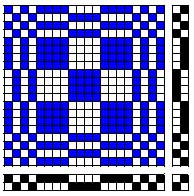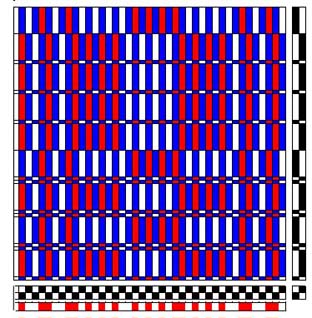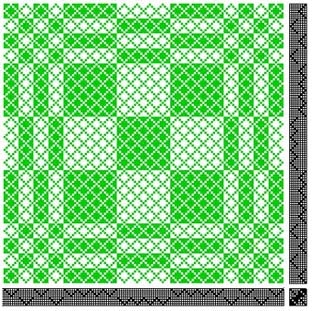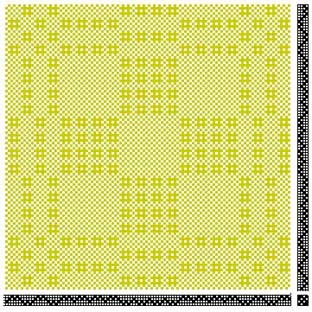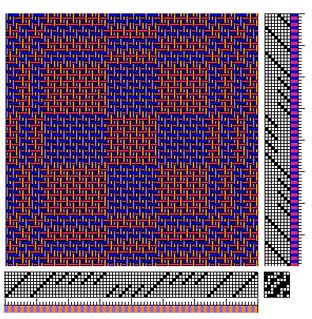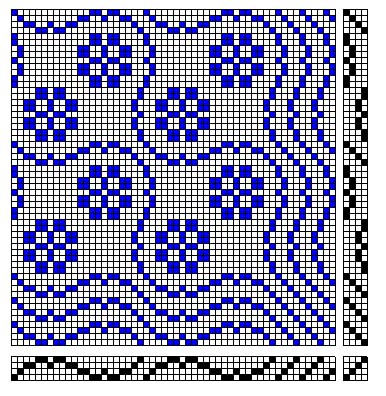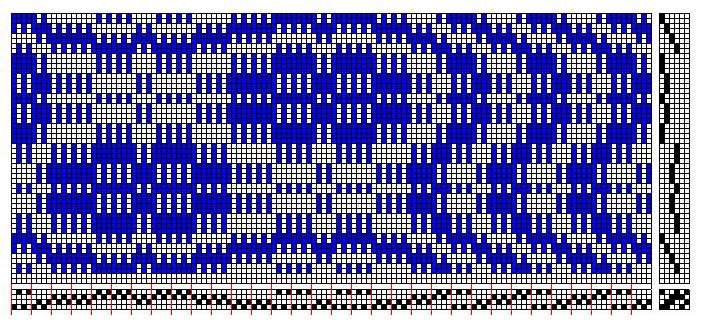But how did that happen?
It happened because we saw every square in the profile draft as a "shorthand" represtentaion
of something else - something that is not pre-determined: a number of ends woven in a
specific way.
We can choose freely what, and how many ends and picks, one square represents.
For example, in the tablecloth above, each profile "end" represents 7 actual warp ends threaded
to a point on 4 shafts.
In this way it is possible to weave nearly any pattern - provided that the loom has enough
shafts and treadles for the chosen structure(s).
But... if it hasn't? If my loom only has 4 shafts and six treadles - do I have to give up on
weaving patterned cloth altogether?
No - 'cos there are other tricks available!
There are several structures that were developed for these cases. Some examples (that in
Sweden are called "simplified drälls") are daldräll
(often called overshot), jämtlandsdräll (often called crackle), summer-and-winter
(in Swedish books sometimes called kuvikas).
The common denominator for the simplified drälls are that they have two weft systems - a
plain weave (which form the ground cloth) and a pattern weft that floats over or under the ground
cloth. They are woven with two shuttles, usually with a thicker pattern weft.
Below is an example that can be woven in daldräll (overshot).

